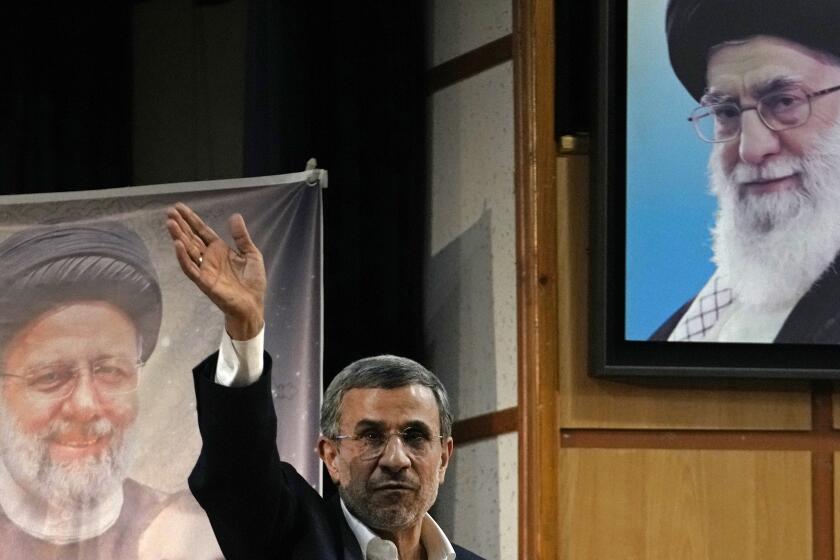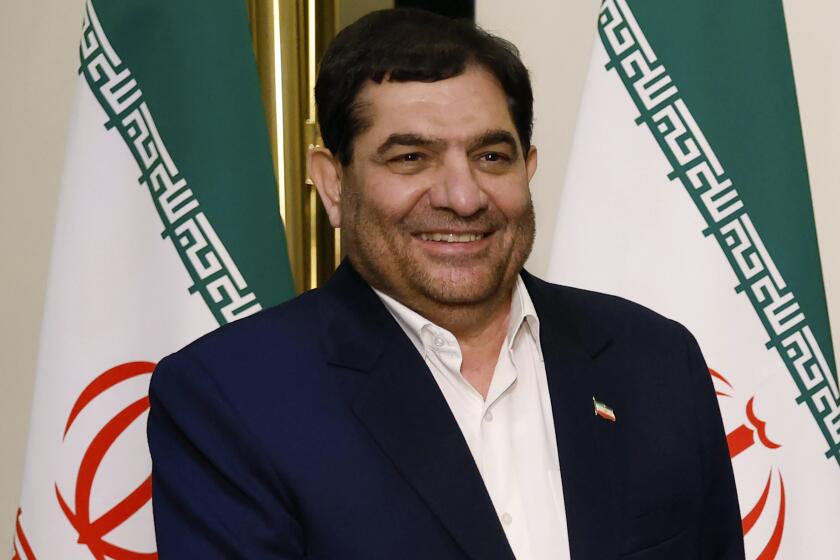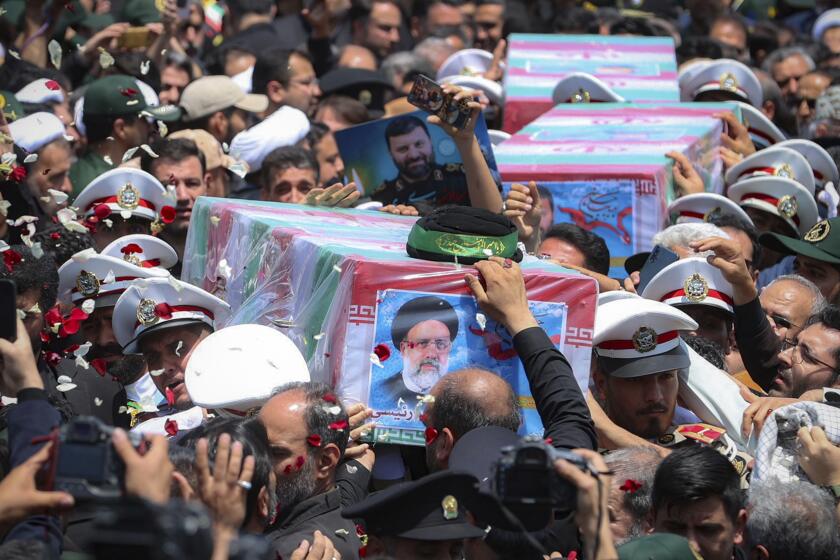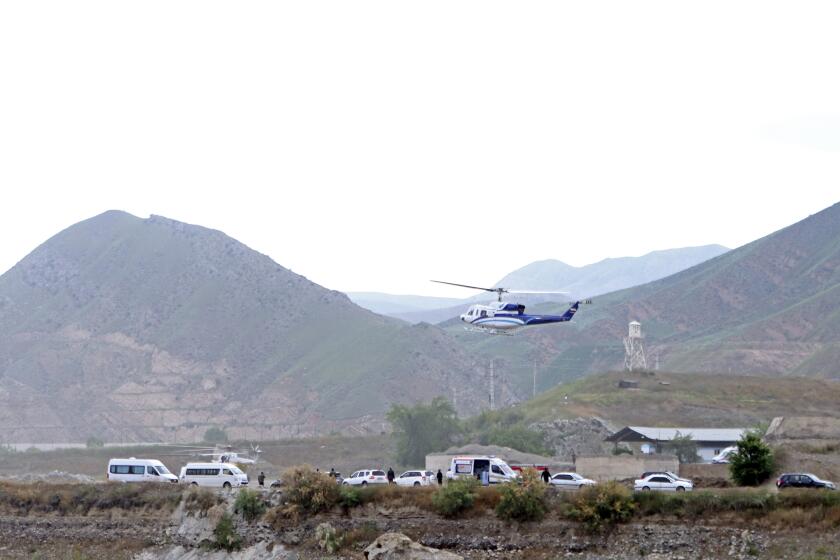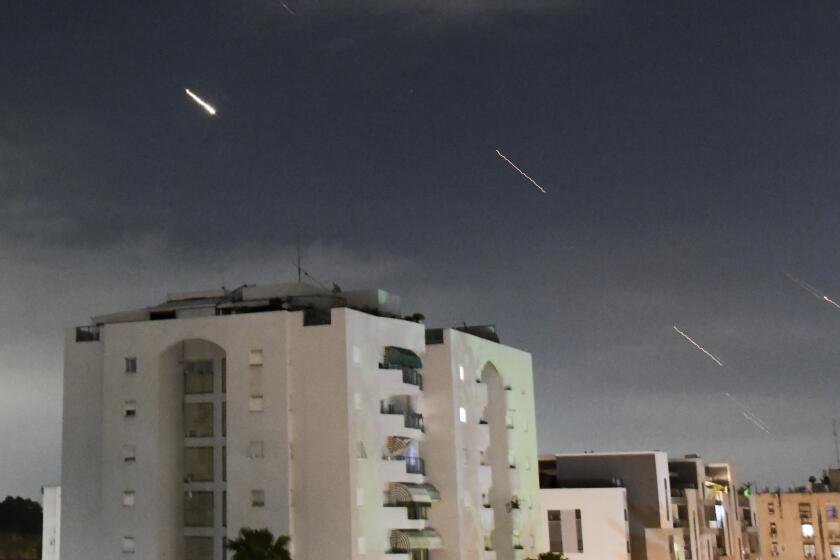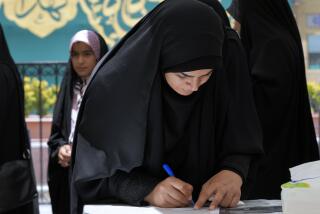Iranâs hard-line parliament speaker emerges as the theocracyâs top figure in the presidential vote
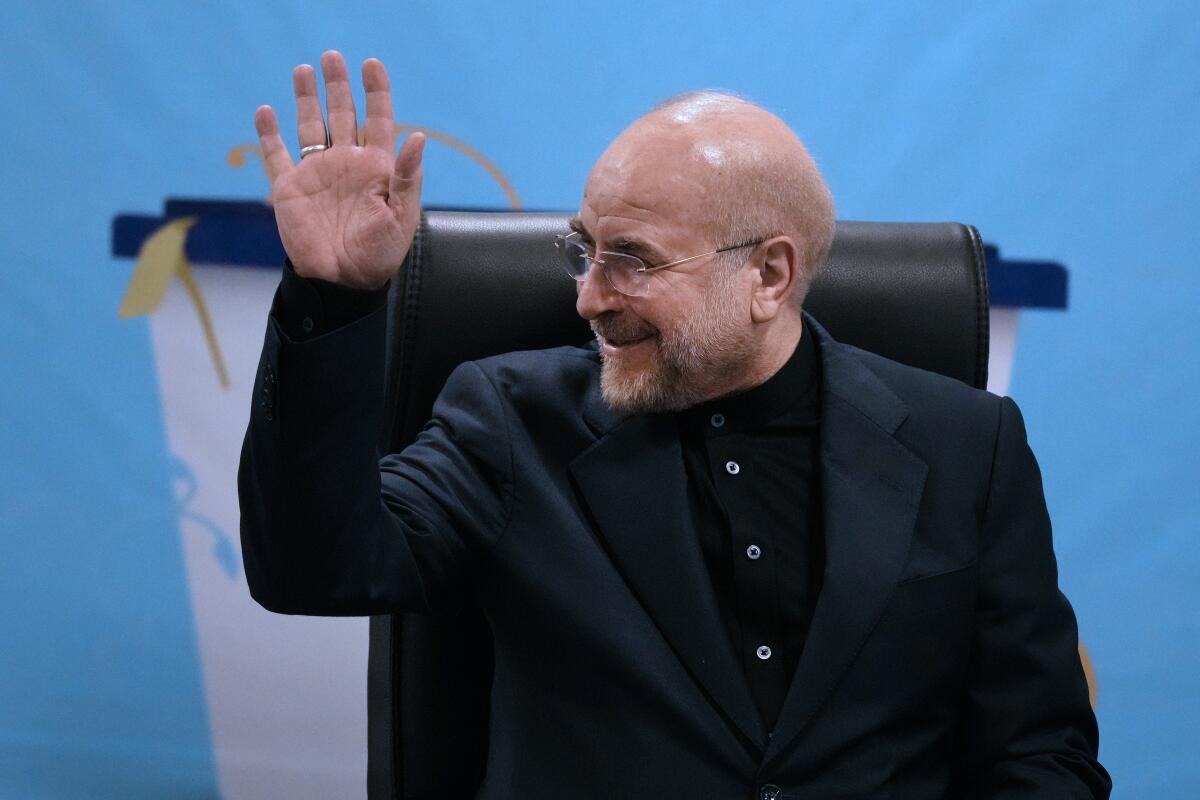
DUBAI, United Arab Emirates â Iranâs hard-line parliament speaker emerged on Monday as the most prominent candidate from within the countryâs Shiite theocracy in the race for the June 28 presidential election to replace the late Ebrahim Raisi, killed in a helicopter crash last month.
The entry of Mohammad Bagher Qalibaf, a former Tehran mayor with close ties to the countryâs paramilitary Revolutionary Guard, catapulted him to the front of the bevy of candidates, just a day after hard-line former President Mahmoud Ahmadinejad also registered his bid for the presidency.
Supreme Leader Ayatollah Ali Khamenei gave a speech earlier Monday, alluding to qualities that Qalibaf himself has highlighted and potentially signaling his support for the speaker.
However, many know Qalibaf who as a former Revolutionary Guard general was part of a violent crackdown on Iranian university students in 1999. He also reportedly ordered live gunfire to be used against students in 2003, while serving as the countryâs police chief.
Ahmadinejad has registered as a possible candidate for the June 28 presidential election, seeking to regain the countryâs top political position.
Those events could play into an election that follows years of unrest gripping Iran, both over its ailing economy and the mass protests sparked by the 2022 death of Mahsa Amini, a young woman who died after being arrested for allegedly not wearing her headscarf, or hijab, to the liking of security forces.
The election also comes at a time of heightened tensions between Iran and the West over Tehranâs rapidly advancing nuclear program, its arming of Russia in that countryâs war on Ukraine and its wide-reaching crackdowns on dissent.
Meanwhile, Iranâs support of militia proxy forces throughout the wider Middle East have been increasingly in the spotlight as Yemenâs Houthi rebels attack ships in the Red Sea over the Israel-Hamas war in the Gaza Strip.
Qalibaf, 62, registered his candidacy with the Interior Ministry in front of a crowd of journalists Monday. Speaking later to the media, he said he would continue on the same path as Raisi and the late Guard Gen. Qassem Soleimani, a figure revered by many in Iran after his 2020 killing in a U.S. drone strike in Baghdad.
Iranâs first vice president, Mohammad Mokhber, has been appointed president of the Islamic Republic after the death of President Ebrahim Raisi in a helicopter crash.
Qalibaf insisted he would not allow âanother round of mismanagementâ to happen in the country and mentioned poverty and price pressures affecting Iranians as the country strains under international sanctions.
âIf I didnât register, the work we have started for resolving economic issues of the people in the popular government (of Raisi) and the revolutionary parliament, and is now at the stage of fruition, would remain unfinished,â Qalibaf said.
He did not elaborate and it remains unclear what those plans actually would entail as Iranâs currency, the rial, continues to spiral and again nears 600,000 to the dollar. The currency was trading at 32,000 rials to the dollar when Tehran signed the 2015 nuclear accord with world powers.
Like other candidates, Qalibaf stayed away from directly discussing the tattered nuclear deal â or the recent comments by officials that Iran potentially could seek the atomic bomb. Such matters of state remain the final decision of Khamenei, 85, but presidents in the past have leaned either toward engagement or confrontation with the West over it.
Iran has interred late President Ebrahim Raisi at the holiest Shiite shrine in the nation, days after he was killed in a helicopter crash.
Along with Ahmadinejad, another former parliament speaker, Ali Larijani, and former Iranian Central Bank chief Abdolnasser Hemmati, who also ran in 2021, have also registered for the June balloting. Eshaq Jahangiri, a former vice president under moderate President Hassan Rouhani whose administration reached the nuclear deal, has also registered for the race.
Acting President Mohammad Mokhber, who took over after Raisiâs death, apparently did not register despite being seen with Khamenei in recent major meetings. Interior Minister Ahmad Vahidi said âabout 80â hopefuls registered during the five-day registration period.
A 12-member Guardian Council, a panel of clerics and jurists ultimately overseen by Khamenei, will decide on a final candidate list by June 12.
The panel has never accepted a woman or anyone calling for radical change to the countryâs governance. Ahmadinejad, who increasingly challenged Khamenei toward the end of his term and is remembered for the bloody crackdown on the 2009 Green Movement protests, found himself disqualified in the last election by the panel.
Iranâs president, foreign minister and others found dead at helicopter crash site, state media say
The helicopter that crashed Sunday in a remote, mountainous region was carrying Iranian President Ebrahim Raisi, Foreign Minister Hossein Amir-Abdollahian.
Qalibaf ran unsuccessfully for president in 2005 and 2013. He withdrew from the 2017 presidential campaign to support Raisi in his first failed presidential bid. Raisi won the 2021 election, which had the lowest turnout ever in a presidential vote in Iran, after every major opponent found themselves disqualified.
A trained pilot, Qalibaf served in the paramilitary Guard during the countryâs bloody war with Iraq in the 1980s. After the conflict, he served as the head of the Guardâs construction arm, Khatam al-Anbia, for several years leading efforts to rebuild the country.
Qalibaf then served as the head of the Guardâs air force, and in 1999, he co-signed a letter to reformist President Mohammad Khatami amid student protests in Tehran over the governmentâs closing of a reformist newspaper and a subsequent security force crackdown. The letter warned Khatami that the Guard would take action unilaterally unless he agreed to put down the demonstrations.
Violence around the protests saw several people killed, hundreds wounded and thousands arrested.
Iran launched the attack in response to a strike widely blamed on Israel that hit an Iranian consular building in Syria earlier this month.
Qalibaf then served as the head of Iranâs police, modernizing the force and implementing the countryâs 110 emergency phone number. But a leaked recording of a later meeting between Qalibaf and members of the Guardâs volunteer Basij force included him claiming that he had ordered the use of gunfire against demonstrators in 2003, as well as praising the violence used against the 2009 protests.
In comments Monday morning before Qalibaf registered, Khamenei told an audience that Iran needed a president who was âactive, hardworking, attentive and loyal to the basicsâ of 1979 Islamic Revolution â a statement that Qalibaf later echoed.
âConcerns about the future of the country was a reason that the elites and entrepreneurs invited me to run in the election,â Qalibaf said. âWho else can take responsibility for finishing jobs in this situation?â
Gambrell writes for the Associated Press. AP writer Nasser Karimi in Tehran contributed to this report.
More to Read
Sign up for Essential California
The most important California stories and recommendations in your inbox every morning.
You may occasionally receive promotional content from the Los Angeles Times.
